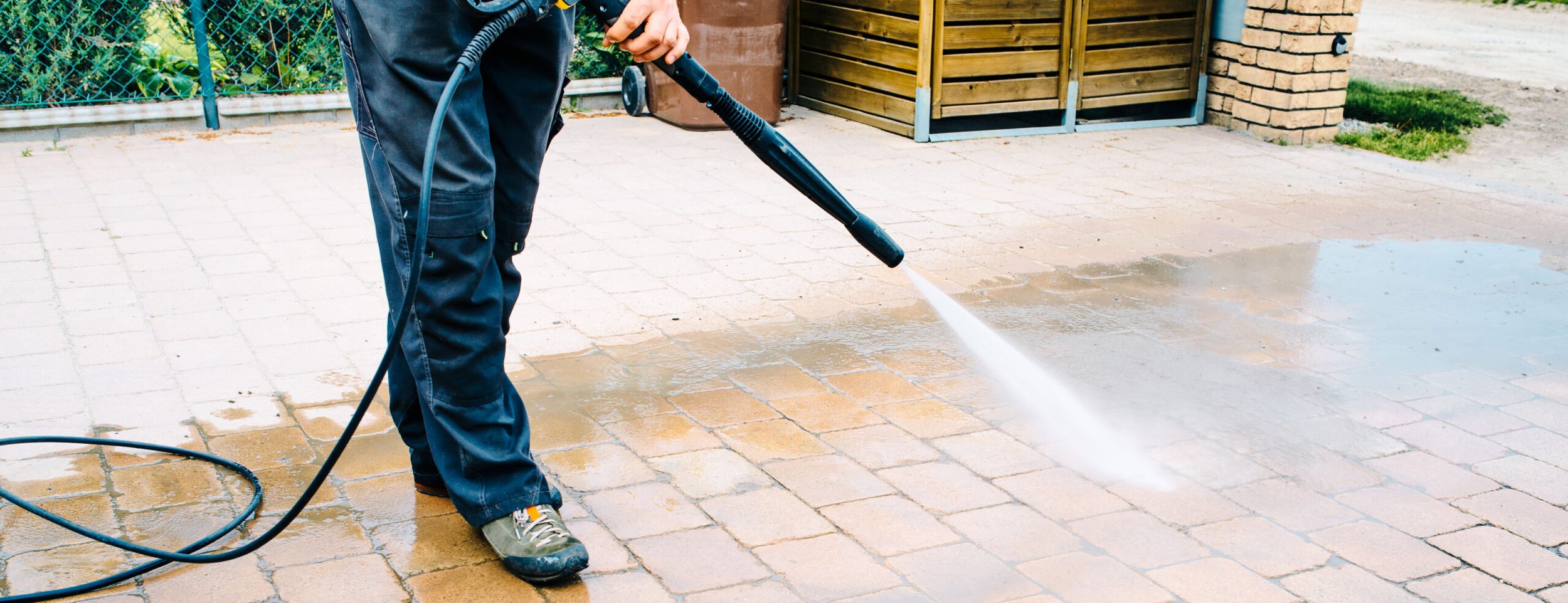
Mejoras para el hogar
Las personas que cuidan de sus casas pueden, sin saberlo, afectar a las vías fluviales locales a través de la manipulación y eliminación inadecuadas de materiales para mejoras del hogar, acopios, escombros, productos químicos, pintura y basura. Los materiales barridos, rastrillados o derramados sobre el suelo o el pavimento pueden ser arrastrados por la lluvia, el agua residencial o el viento hasta nuestros arroyos locales. El agua de enjuague nunca debe verterse a una calle, cuneta o alcantarilla.
Los productos etiquetados como "no tóxicos" y "biodegradables" pueden dañar la fauna si entran en el sistema de alcantarillado. Estos productos son vertidos prohibidos al sistema de alcantarillado pluvial.
¿EN QUÉ SE DIFERENCIAN LOS SISTEMAS DE ALCANTARILLADO PLUVIAL Y SANITARIO?
El sistema de alcantarillado pluvial transporta el agua de lluvia a los arroyos locales, ríos y el océano. Este sistema se creó para evitar inundaciones en comunidades y hogares.
Toda el agua y los materiales que entran en el sistema de alcantarillado pluvial están sin tratar.
El alcantarillado sanitario es un sistema de tuberías que transporta el agua usada de los edificios a una instalación de recogida y tratamiento de aguas residuales, donde se tratan el agua y las aguas residuales.
Si ve un desagüe exterior y no está seguro de su uso, suponga que es un desagüe pluvial y no vierta en él el agua de lavado.
Los arroyos limpios son importantes. Proporcionan un hábitat vital para los peces, actividades recreativas y contribuyen a la belleza de nuestra ciudad.
PREPARACIÓN DEL TRABAJO
Compruebe el tiempo; evite trabajar al aire libre si se prevé lluvia o viento fuerte.
Esté preparado. Tenga materiales a mano para contener los derrames. Esto puede incluir materiales como una escobilla de goma, un recogedor, un cubo grande, un trapo, una protección para la entrada del desagüe pluvial, una aspiradora para recoger la escorrentía del enjuague de cualquier área de derrame.
Coloque una lona debajo del equipo y los materiales para facilitar la limpieza de cualquier material derramado.
RESIDUOS DE JARDINERÍA Y MATERIALES DE JARDINERÍA
Para más información, consulte el folleto "Cuidado del jardín".
BARBACOAS
Tirar los restos de comida quemada a la basura.
Evite limpiar las parrillas en zonas pavimentadas.
LAVADO A PRESIÓN
Cuando lave a presión cualquier superficie, consulte el documento "Directrices de lavado a presión" y/o su municipio local para conocer los requisitos y el cumplimiento de la normativa.
Limpie siempre previamente la zona que se va a lavar a presión barriendo la basura, la suciedad y otros residuos antes de hacerlo.
Utilice trapos o un material absorbente, como arena para gatos, para eliminar cualquier fuga de aceite, grasa u otros productos derivados del petróleo que manchen las zonas exteriores. Estos productos deben eliminarse como residuos peligrosos. Póngase en contacto con el programa de Residuos Peligrosos del Hogar administrado por su condado local o con las instalaciones de recogida para obtener más información y conocer los lugares de recogida.
El vertido de aguas residuales del lavado a presión a una zona ajardinada puede permitirse si no se utilizan jabones y se ha comprobado la pendiente y la zona para asegurarse de que se evitará la escorrentía a una calle o cuneta.
Elimine el agua de lavado recogiéndola y vertiéndola en el alcantarillado sanitario a través de un fregadero, un inodoro o un desagüe de alcantarillado. Si se trata de materiales peligrosos (productos derivados del petróleo, combustibles, anticongelantes, disolventes y pesticidas), el agua deberá eliminarse como residuo peligroso y no podrá verterse al alcantarillado sanitario.
Utilice una aspiradora en húmedo/seco o una bomba de sumidero para recoger las aguas residuales.
PINTURA
Elija productos al agua, pintura o tinte, en lugar de productos al aceite siempre que sea posible.
Las pinturas al agua, brochas, rodillos y equipos de pulverización pueden limpiarse en un cubo o fregadero y verterse al alcantarillado sanitario.
Para más información, véase el folleto "Proyectos de pintura".
TRABAJOS DE HORMIGÓN Y ALBAÑILERÍA
Contener toda el agua y los materiales utilizados.
Mezcle sólo la cantidad de hormigón necesaria.
Coloque el hormigón sobrante en una zona de tierra (preferiblemente forrada con lona o Visqueen) o en un contenedor para que el material se seque antes de tirarlo a la basura.
Recicle o elimine rápidamente los escombros y residuos de acuerdo con la normativa federal, estatal o local.
LIMPIEZA
Limpie inmediatamente los derrames.
Cubra y proteja los materiales no utilizados.
Nunca lave con manguera las zonas de trabajo en una calle, alcantarilla o desagüe pluvial.
Barre los materiales sueltos y deposítalos en la basura.
Deposite en el cubo de la basura los residuos de reformas, como el barro de las paredes de yeso o los recortes de azulejos y encimeras.
El vertido de contaminantes en el sistema de alcantarillado de aguas pluviales o en un curso de agua está prohibido por las ordenanzas locales y las leyes estatales y federales.
EN CASO DE EMERGENCIA O DERRAME DE MATERIALES O RESIDUOS PELIGROSOS, LLAME AL 911 O A LOS BOMBEROS DE SU LOCALIDAD.
PARA TODOS LOS VERTIDOS NO URGENTES / NO PELIGROSOS
Para informar de un vertido no peligroso, o para otros números de teléfono útiles, consulte la hoja de referencia informativa Spill Numbers (Números de vertido) para obtener la información de contacto de su agencia local o visite: www.streetstocreeks.org/spill-numbers/.
